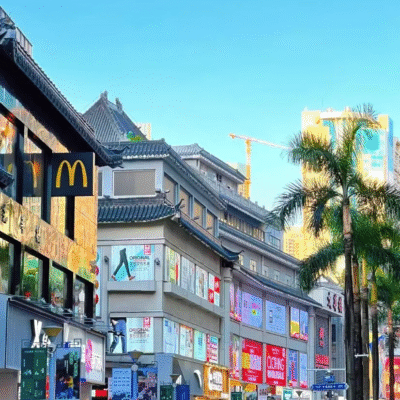Shenzhen is often portrayed as a metropolis of skyscrapers and innovation, but for those of us who live here, it holds many secret corners that tourists rarely discover.
One of these hidden treasures is Yangmeikeng. I first heard about it not from a travel guide, but from a colleague who shared my passion for cycling.

“If you want to see the real ocean of Shenzhen,” he said, “go to Yangmeikeng.” Curious and craving a break from my busy life, I decided to visit.
That day marked the beginning of a special connection between me and this peaceful coastal retreat.
Today, I want to share my experiences and insights about Yangmeikeng with you—not just as a travel recommendation but as an invitation to discover a part of Shenzhen that even many locals hold close to their hearts.
What is Yangmeikeng?
It’s hard to believe that in a city like Shenzhen, famed for its speed and innovation, there still exists a stretch of almost untouched coastline. Yangmeikeng is one such unexpected haven.
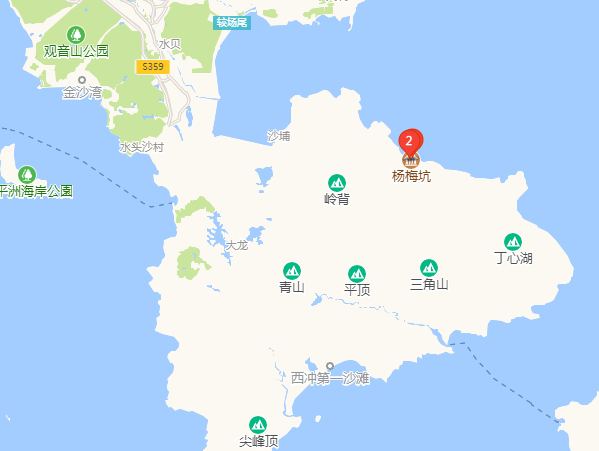
Located in the eastern part of Shenzhen, nestled at the southeastern tip of the Dapeng Peninsula, Yangmeikeng faces the vast South China Sea.
Cradled by green mountains and open waters, it feels naturally separated from the city’s hustle and bustle.
Once a small fishing village surrounded by bayberry orchards, Yangmeikeng’s name literally means “Bay of Bayberry Trees.”
Although time has worn away its old appearance, the village’s simple and pure spirit remarkably survives amidst Shenzhen’s modernization.
When you arrive, don’t expect rows of beach umbrellas or the noise of vendors calling out to tourists. Instead, you’ll find a gently winding coastal path, shaded by lush forests, sparkling seawater, and white-capped waves leaping against rugged rocks.
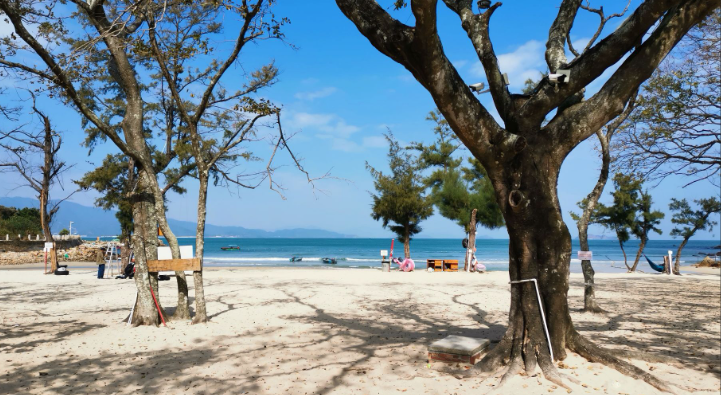
I must admit, during my first visit, I carried a trace of skepticism. Could a place so close—just one or two hours’ drive from downtown Shenzhen—really still retain such natural beauty?
But the moment I stepped out of the bike rental shop, pedaled along the coastal trail, and felt the salty breeze on my face, all doubts vanished.
The sunlight danced on the water like scattered silver coins; the gravel crunched softly under my tires; and the sounds of waves and birds filled the air.
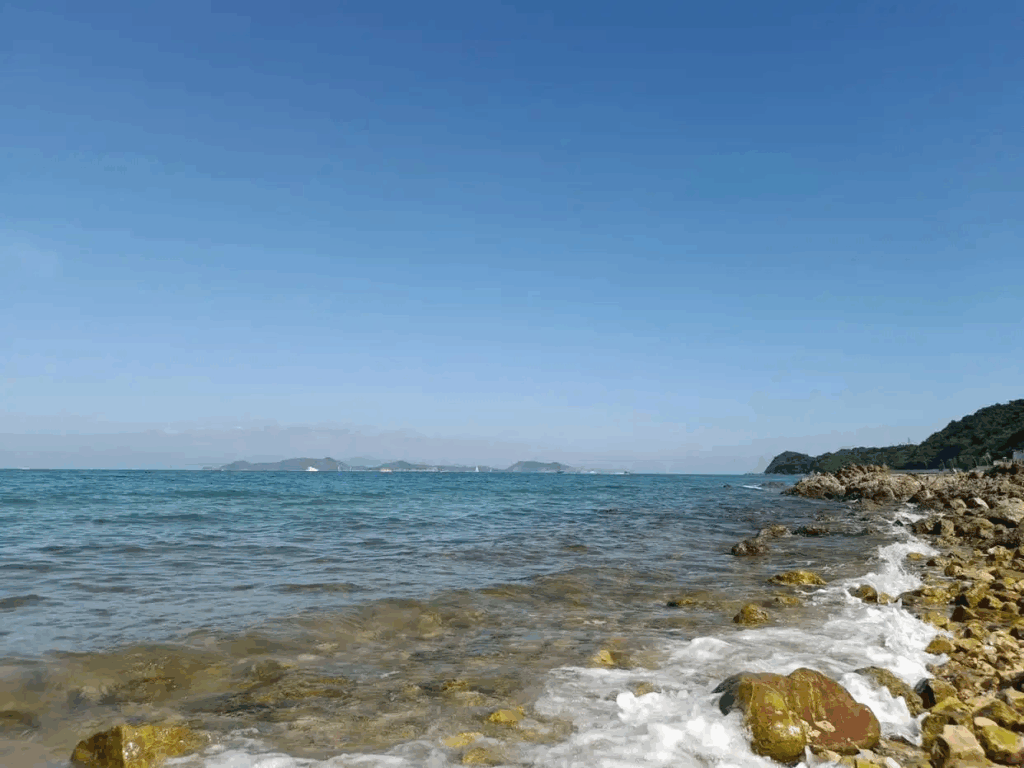
It was then that I knew—I had found the softest, truest side of Shenzhen.
Compared to more famous spots like Dameisha or Xiaomeisha, Yangmeikeng possesses a quiet charm. No overdevelopment, no artificial attractions—only the genuine simplicity of nature, like an unpolished watercolor painting inviting you to look closer and feel deeper.
Of course, this tranquility and authenticity come at a small price: reaching Yangmeikeng requires a bit of effort. But that journey itself becomes a meaningful prelude to the peacefulness that awaits.
So, how exactly can you get to this hidden coastal paradise? Let me guide you.
How to Get to Yangmeikeng
Getting to Yangmeikeng requires a bit of planning but is well worth the effort.
- Public Transportation:
- From downtown Shenzhen (e.g., Luohu or Futian District), take the MTR Line 3 to Longgang Station.
- From there, you can catch a bus or taxi to Dapeng New District, and then transfer to a local shuttle or rent an electric bike to reach Yangmeikeng.
- Self-Driving:
- If you have access to a car, driving is the most convenient. Take the Yanba Expressway and follow signs to Dapeng Peninsula. Note that on weekends and holidays, entry to Yangmeikeng may require an advance reservation for parking.
- Cycling Enthusiasts:
- Hardcore cyclists sometimes challenge themselves by cycling from central Shenzhen to Yangmeikeng—a long but rewarding ride!
Tip: Try to visit on weekdays to avoid the weekend crowds and enjoy the full serenity of the place.
Family-Friendly Travel Guide (First-Hand Experience)
Yangmeikeng is not only perfect for couples and hiking enthusiasts, but also an ideal destination for a relaxed family trip.

Especially for families traveling with seniors and young children, careful planning can make the experience smooth and enjoyable.
Recently, during my holiday, I visited Yangmeikeng with my wife and child.
Based on our first-hand experience, I’d like to share the details of our trip to help others planning a similar family outing.
Travel Arrangements
We departed from downtown Shenzhen early in the morning and arrived at the Yangmeikeng parking lot after approximately 2.5 hours of driving.
The parking fee is capped at ¥50 per day, which we found to be reasonable and reassuring.
If your schedule allows, you may consider booking a guesthouse near Yangmeikeng or staying at Luozui Mountain Villa.
Staying overnight offers the advantage of resting beforehand and experiencing even more of the beautiful coastal scenery.
There are also many restaurants in the surrounding area, most specializing in seafood.
Tip: Be sure to check the menu prices carefully before ordering and choose a restaurant that suits your preferences and budget.
Experiencing Yangmeikeng: What Makes It Special
Coastal Cycling
One of the best ways to experience Yangmeikeng is by renting a bicycle. As soon as you enter the area, several small bike rental shops line the roadside, offering affordable hourly and daily rentals.

Riding along the coastal trail, the sea always to your left and the mountains standing proud to your right, you feel an exhilarating freedom.
The cycling path stretches for about five kilometers, winding gently alongside rocky beaches and small coves.
You will pass towering palm trees, colorful fishing boats resting on the shore, and the occasional glimpse of small secluded beaches that beckon for a quick stop.
For me, this ride has become a ritual of sorts—a time to shed the heaviness of the workweek and simply let my thoughts drift with the ocean breeze.

Luozui Mountain Villa and Beach Experience
Luozui Mountain Villa is one of the filming locations for the movie The Mermaid. Although it has since become a popular destination, the area has largely retained its natural, unspoiled environment.

The beach is not large, but it is exceptionally clean. Soft sands and scattered rock formations create a unique coastal landscape.
Children can build sandcastles or collect seashells along the shore, while little explorers can search for small fish, shrimp, and crabs hidden among the rocks, turning every discovery into an adventure.
Following the coastline, there is also a cliffside restaurant offering an outstanding dining experience. Whether seated indoors or on the outdoor terrace, guests can enjoy delicious meals while gazing out over the endless sea and the crashing waves.
During our visit, the weather suddenly shifted, and a light rain began to fall. The sea and sky merged into one, creating a dreamlike, misty landscape reminiscent of a traditional Chinese ink painting.
Walking slowly along the rain-soaked coast in our raincoats, we were embraced by the fresh sea breeze and the gentle drizzle.
Though slightly chilly, this unexpected change in weather added a touch of romance and poetry to our journey, making it one of the most memorable moments of the trip.

Camping and Picnicking
For travelers wanting a deeper immersion, camping at Yangmeikeng is a rewarding option. You can either bring your own gear or rent equipment nearby.
Camping here is simple but profound—no luxury facilities, just the sound of the ocean, a canopy of stars, and the occasional flicker of fireflies.
It’s an experience that gently reminds you of how little you truly need to feel content.
Please remember: leave no trace. Protecting this fragile ecosystem ensures that others can enjoy its beauty too.
Accommodation and Camping Setup
For this camping trip, we chose to bring our own tents. We had purchased fully automatic tents online in advance for around 400 RMB, featuring waterproof and sunproof functions.
In addition to the tents, we also prepared basic camping gear including moisture-proof mats, inflatable mattresses, picnic mats, and air pumps.

There are tent rental services available in the village. One of my friends rented a double tent for 40 RMB, but the quality was relatively poor:
- It was a single-layer design without sun protection.
- The setup process was complicated and inconvenient.
Therefore, if possible, it is recommended to bring your own tent for a more comfortable and reliable experience.
Food and Dining
We did not purchase food at the campsite. Instead, we stocked up on snacks and supplies from a supermarket before arriving.
Since Yangmeikeng is a tourist area, food prices tend to be higher, so bringing your own food is a more economical and convenient choice.
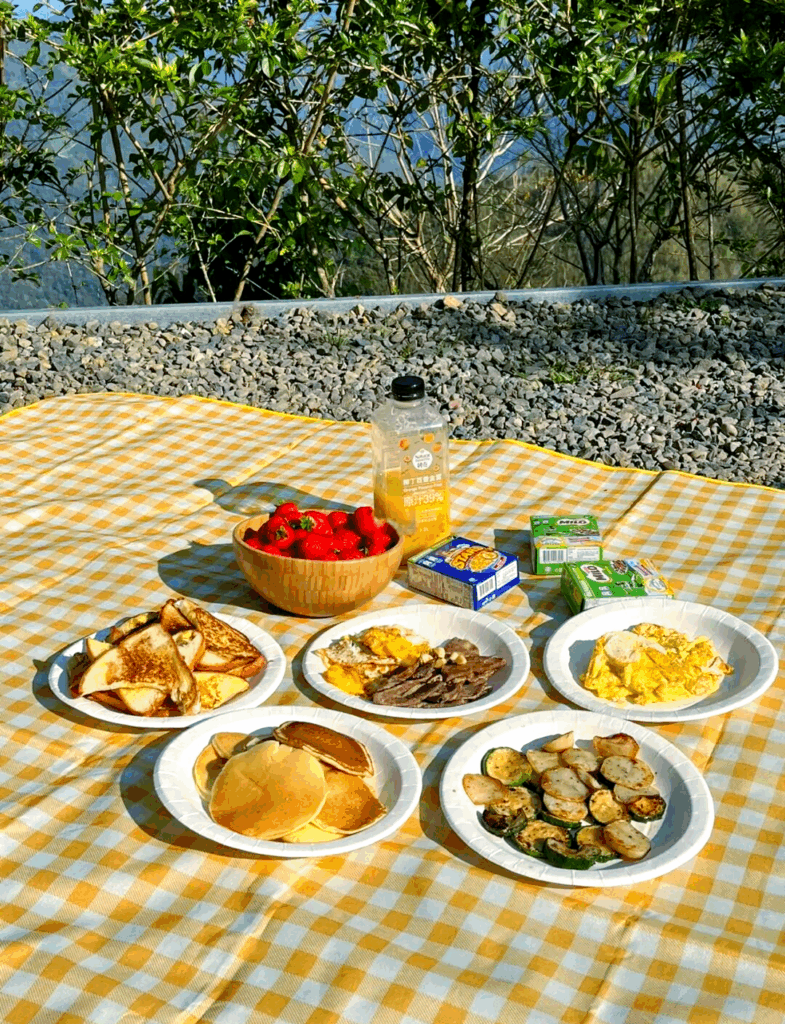
Camping Location Options
Initially, we planned to camp on Yangmeikeng Beach, but after visiting the site, we found that:
- The beach area was relatively small.
- The ground was not very clean.
- The water quality was not ideal.
After some inquiries, we learned that there are generally two main camping options:
1. Mermaid Area (Toward Peach Blossom Island)
- A site fee of 20 RMB per person is required.
- There are three transportation options: by boat, on foot, or by sightseeing cart. (Note: Due to typhoon damage last year, the road to Peach Blossom Island was closed, and cycling is prohibited.)
However, we later heard that camping is no longer allowed on the Mermaid side, so we abandoned this plan.
2. Dajia Island
We ultimately chose Dajia Island for our camping site:
- The transportation package was 500 RMB for four people, including round-trip boat service and a double tent rental.
- Upon arrival, the island host assigned us a camping area, with an additional site fee of 10 RMB per person.
- The island provides basic washing and shower facilities with cold water, available at no extra charge.
After setting up the tents, we changed into swimwear and went swimming immediately, which was incredibly refreshing and enjoyable.
Tips:
- Boats generally stop operating after 7 PM, so it is important to plan your schedule accordingly.
- The boat ride from the dock to Dajia Island takes about 15 to 20 minutes.
- For the return trip, you simply need to call the captain to arrange pickup.
Final Thoughts
Whether you’re seeking a peaceful escape from the city or a scenic cycling route along the coastline, Yangmeikeng offers a rare combination of tranquility, natural beauty, and local charm.
It’s one of those places that reminds you Shenzhen isn’t just skyscrapers and tech hubs—it’s also home to some of the most breathtaking seaside landscapes in southern China. So pack your sunscreen, bring your camera, and let Yangmeikeng surprise you.

